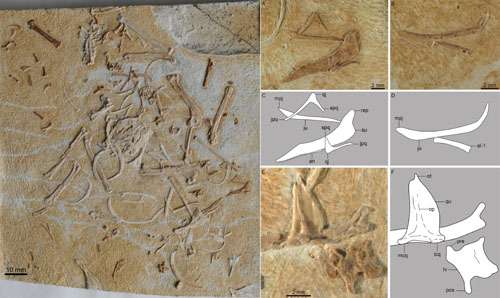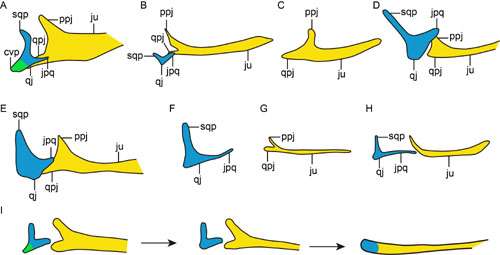New enantiornithine bird reveals the refinement for cranial kinesis occurring early in avian evolution

Enantiornithes is the most diverse Mesozoic birds. Approximately half of the known global diversity of Enantiornithes is from the Early Cretaceous Jehol Biota of China. The Jehol birds are usually complete and articulated, but compressed in two dimensions. Consequently, key features regarding some skeletal elements, particularly the gracile skull bones, are obscured by crushed and overlying elements. Thus, detailed cranial morphology remains largely unknown for enantiornithines. In a paper published online August 21 in Journal of Systematic Palaeontology, Dr. WANG Min, Institute of Vertebrate Paleontology and Paleoanthropology (IVPP), Chinese Academy of Sciences, and his colleagues reported a new enantiornithine bird from the Early Cretaceous Jehol Biota. Although incomplete, the skeleton is disarticulated and several cranial elements are exquisitely well preserved in their entirety, providing morphological information that had previously been poorly understood.
These new specimens, disarticulated but well preserved, were found from the Jiufotang Formation near Dapingfang Town, Chaoyang Country, in Liaoning Province, northeastern China. They provide a rare chance for paleontologists to reconstruct the morphology of certain cranial elements, particularly the jugal and quadratojugal bones.
The new taxon, Pterygornis dapingfangensis, has a unique sternal morphology with an external rostral spine and a pair of craniolateral processes. It is a small, sparrow-sized enantiornithine, distinguishable from other enantiornithines by the combination of morphologies. Phylogenetic analysis resolves the new taxon in a derived position within Enantiornithes.
The large modifications in jugal and quadratojugal reflect the refined cranial kinesis in basal birds relative to their dinosaurian ancestors. Modern birds characteristically have a kinetic skull in which the upper jaw or a part of it can be moved with respect to the brain case, which is significant in the feeding behaviour. Such a functional property involves a complicated mechanism and the refinement of the cranial elements. Compared with nonavian dinosaurs, the most conspicuous modifications in cranial elements pertaining to the skull kinesis of modern birds are the absence of the postorbital, and of the squamosal-quadratojugal and the jugal-postorbital articulations, which enable the quadrate to rotate rostrocaudally, pushing the jugal bar and the pterygoidpalate bar forward or backward; in turn, the rostrum can be elevated or depressed with respect to the brain case.

"Our studies indicate that the quadratojugal is an inverted L-shaped element, morphologically similar to that of more basal birds Archaeopteryx bavarica, Jeholornis prima, Confuciusornis sanctus and Sapeornis chaoyangensis. Our findings also illustrate that the quadratojugal underwent large modifications with the reduction of the caudoventral and squamosal processes sequentially during early avian evolution, contributing to the refinement of the cranial kinesis in early birds", said WANG Min, lead author of the study.
The reduced squamosal process of the quadratojugal and the postorbital process of the jugal in Pterygornis dapingfangensis and more basal birds indicate that refinement for cranial kinesis occurred early in avian evolution.
More information: "A new small enantiornithine bird from the Jehol Biota, with implications for early evolution of avian skull morphology." Journal of Systematic Palaeontology DOI: 10.1080/14772019.2015.1073801
Journal information: Journal of Systematic Palaeontology
Provided by Chinese Academy of Sciences




















